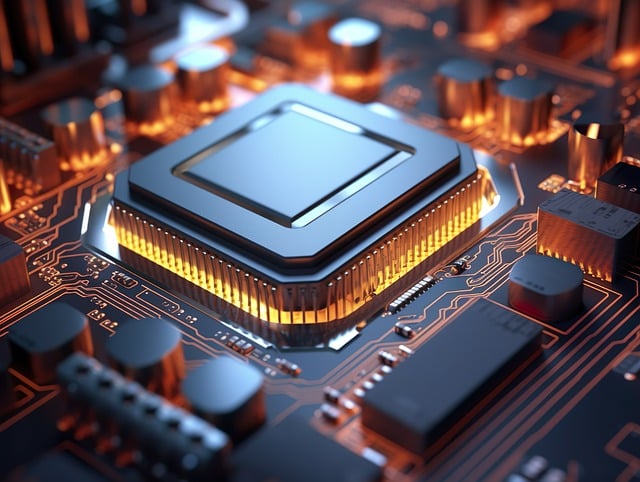The digital artistry and content creation, the quest for unprecedented visual fidelity is unceasing. As your projects burgeon in complexity, mere processing power wanes in the face of demanding rendering tasks. This is where the significance of selecting the best CPU for rendering becomes paramount. The intricacies of architectural visualization, best CPU for 3D rendering, and video rendering necessitate a computational juggernaut that harmonizes raw potency with finesse. Delve into the heart of this article as we navigate the labyrinth of silicon possibilities, unraveling the hyperbolic clock speeds, multi-core orchestration, and the symphony of cache hierarchies. Your journey towards effortless rendering brilliance starts here; let’s sculpt your desires into digital actuality.
What is a CPU?
The heart of every computing device lies the Central Processing Unit (CPU), a microchip that serves as the brain of the system. It processes instructions, performs calculations, and facilitates tasks. In essence, the CPU translates abstract commands into concrete actions, paving the way for digital alchemy.
What is Rendering Software?
In the domain of visual arts and computational design, rendering software emerges as a tool to create lifelike images from digital models. By simulating light, shadow, and materials, it translates three-dimensional data into two-dimensional visual outputs, allowing artists to manifest their imagination with digital precision.
Factors to Consider When Choosing a CPU for Rendering
The journey to pinpoint the optimal CPU for rendering isn’t linear. One must ponder various elements:
- Performance Metrics: Look for high clock speeds and ample cores for multitasking.
- Compatibility: Ensure your chosen CPU integrates seamlessly with your motherboard and other components.
- Future-proofing: A CPU that can meet both present and near-future demands will prove to be a prudent investment.
- Heat Management: Rendering tasks are intensive, making thermal efficiency a crucial factor.
Intel vs. AMD: The Never-Ending Battle
In the grand theater of computational prowess, Intel and AMD are two titans that perpetually vie for supremacy. Intel, with its pedigree and consistent evolution, often champions clock speeds and power efficiency. In contrast, AMD is lauded for its multi-core advantages and cost-effectiveness, especially in tasks demanding concurrent processing.
Best Budget CPU for Rendering Workloads
- Intel i5 12400: An affordable powerhouse, the i5 12400 seamlessly melds performance with cost-effectiveness. Designed on Intel’s newer architecture, it promises robust multi-core performance suitable for budding artists and freelance renderers.
- Intel i5 12400: [Note: This CPU is repeated in the outline. For variety, another budget option could be considered.
Best Mid-Range CPUs for Rendering Workloads
- Intel i5 13600K: Nestled comfortably in the mid-range echelon, the 13600K strikes a balance between power and price. It boasts enhanced thermal designs and higher boost clocks, making it ideal for more complex rendering tasks.
- Intel Core i7 12700F: A step above its i5 sibling, the i7 12700F comes with additional cores and threads, providing a noticeable uptick in rendering speeds and multitasking capabilities.
Best High-End CPUs for Rendering Workloads
- Intel Core i9 13900K: Catering to professionals, the i9 13900K is a behemoth. With an unmatched clock speed, it minimizes rendering timeframes, delivering outputs at a blistering pace.
- AMD Ryzen 9 7950X: is a pinnacle in CPU advancement. Merging precision and power sets a new standard for rendering and multi-threaded operations.
- AMD Threadripper 3990X: is a beacon of processing brilliance. With its advanced architecture, it positions AMD Threadripper as the benchmark for high-performance computing tasks.
Optimizing Your Rendering Workflow Beyond the CPU
Optimizing your rendering workflow delves deeper than just processing power. Considering data throughput, memory hierarchy, and the software ecosystem is quintessential. By attuning storage solutions and calibrating graphical interfaces, one can transcend the conventional confines of rendering. This holistic approach ensures that the CPU isn’t the sole workhorse, but part of a harmonious, integrated system, culminating in a streamlined rendering workflow.
Conclusion
The multifaceted realm of digital craftsmanship, rendering gracefully waltzes between artistry and precision engineering. While the former echoes individual creativity, the latter requires astute selections in hardware. At the crossroads of this duality, the CPU stands as the fulcrum, profoundly influencing both the speed and finesse of the final product. Amidst the ceaselessly shifting panorama of technological advancements, the onus is on making discerning choices and harmonizing peak performance with fiscal prudence and anticipatory needs. For both the budding enthusiast and the seasoned maestro, an apt CPU selection unquestionably refines and amplifies the rendering journey.
TechAroundNow is a blogging website that centers on the latest technology and marketing innovations and trends, aimed at assisting individuals and businesses across the globe since 2021. TechAroundNow continues to serve as a reliable source for staying up-to-date with the ever-evolving landscape of technology and marketing, ultimately fostering growth and success in the digital era.


